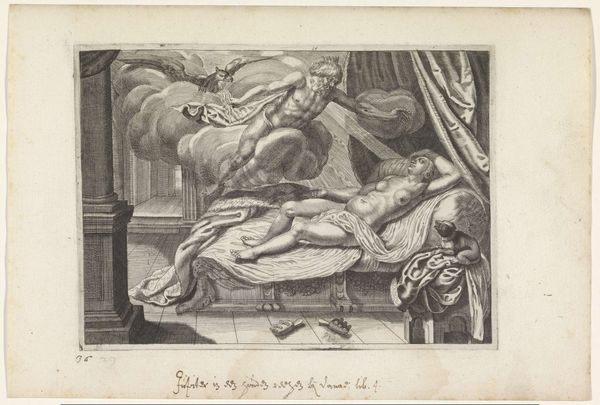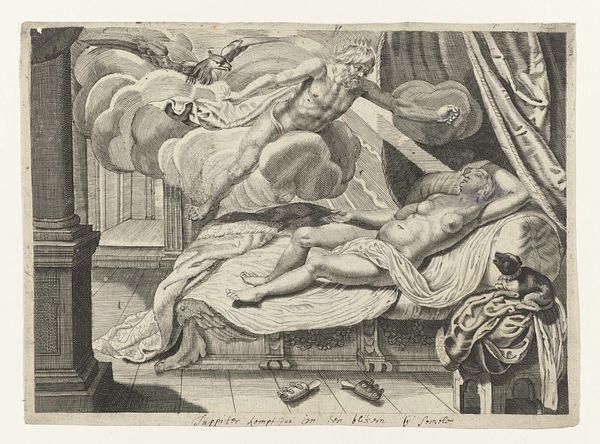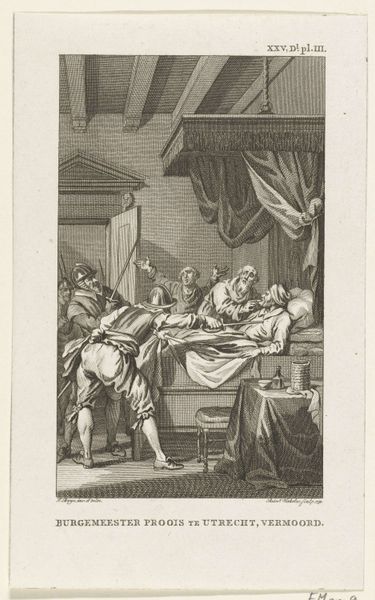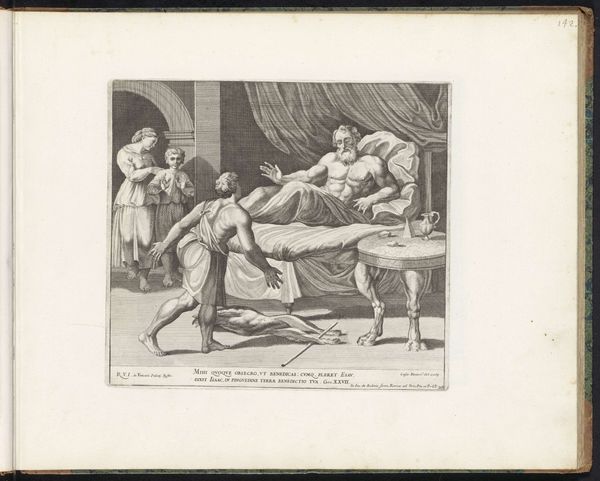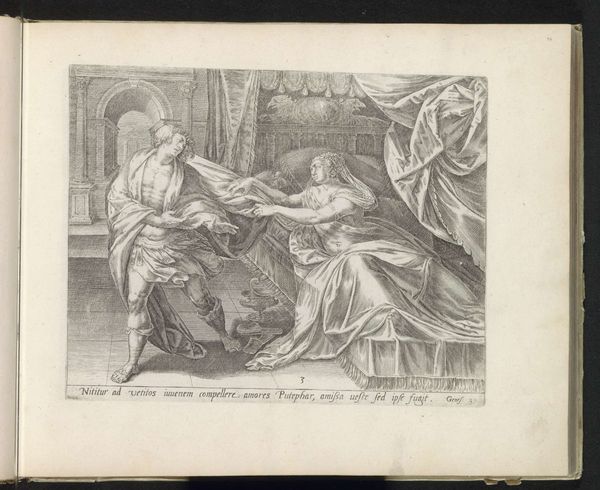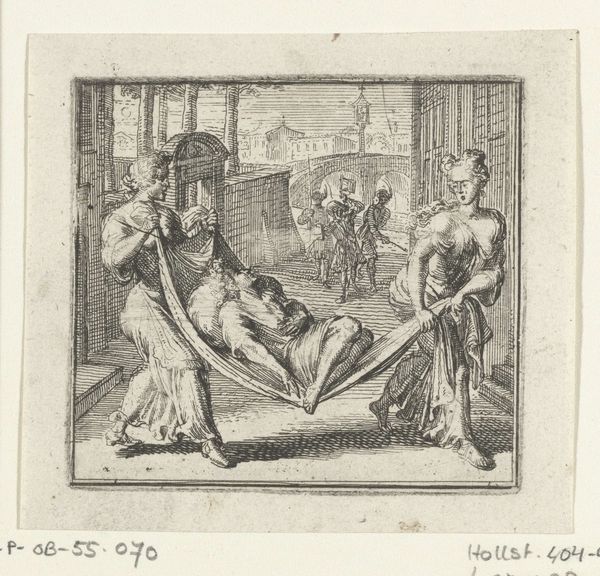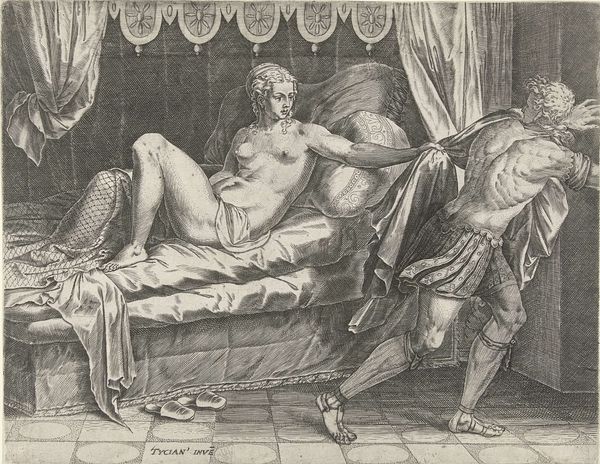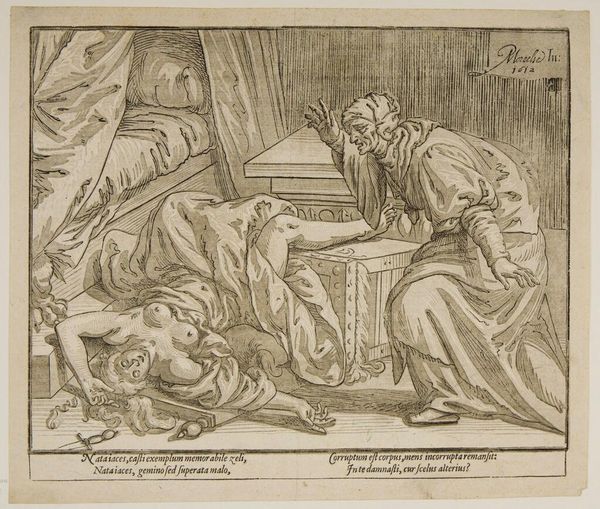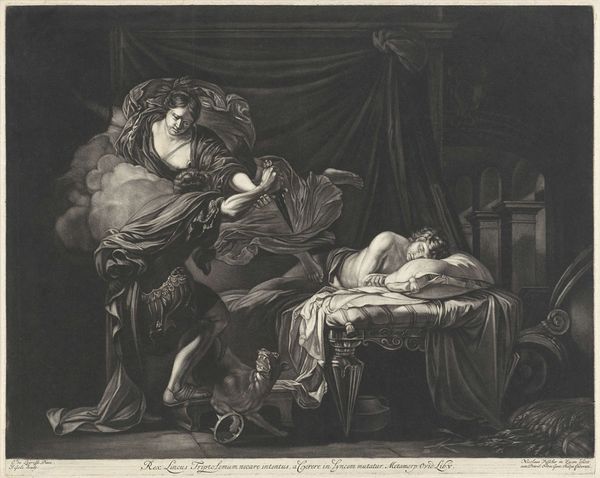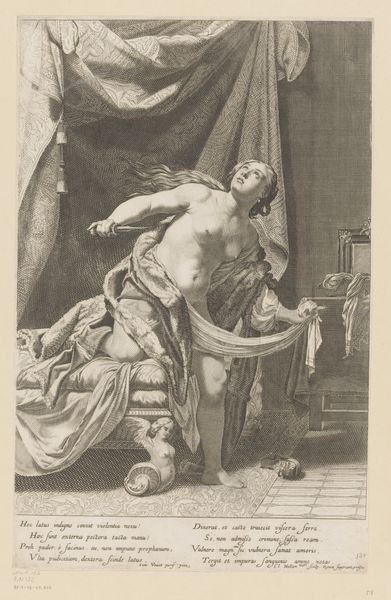
drawing, print, pen, engraving
#
drawing
#
baroque
# print
#
pencil drawing
#
pen
#
history-painting
#
nude
#
engraving
Dimensions: height 164 mm, width 229 mm
Copyright: Rijks Museum: Open Domain
Editor: Here we have "Apollo en Mercurius bezoeken Chione," a Baroque engraving by Crispijn van de Passe the Younger, created sometime between 1636 and 1670. It depicts a rather vulnerable looking woman asleep in bed with two figures attending her. I'm immediately drawn to the incredible detail achieved through the engraving technique. What strikes you about it? Curator: What grabs me here is thinking about the means of production and reproduction inherent in printmaking. Look at the sharp, precise lines achieved through engraving, likely on a copper plate. How does this medium, designed for dissemination, change our relationship to the narrative depicted? It allows for mass consumption, doesn't it, democratizing the viewing experience. Editor: That’s an interesting point. So, is the intent less about portraying a specific scene, and more about mass consumption of images? Curator: Well, I wouldn't discount the scene. Think about who's buying these prints, the burgeoning merchant class. Consider the social context: what narratives are they interested in consuming? Is it possible that there's something in this particular story – with it's echoes of class and entitlement, and, shall we say, moral flexibility – that reflects or reinforces their own developing worldview and, perhaps, justifies the conditions that created this wealth. Notice too how printmaking bridges the gap between "high art" and more accessible craft, impacting ideas of value. Editor: So, by analyzing the printmaking process and its social context, we uncover more about the values of the people who would consume them. Curator: Precisely. We move beyond just admiring the aesthetic to understanding the broader implications of its production and distribution. Editor: That’s a fresh perspective. I always looked at art through a purely aesthetic lens, focusing on artistic intent. I never fully considered how material and economic realities were central to the artist's vision and legacy. Curator: Examining the material conditions opens up avenues for asking different questions about both the artwork, and its role in society.
Comments
No comments
Be the first to comment and join the conversation on the ultimate creative platform.
